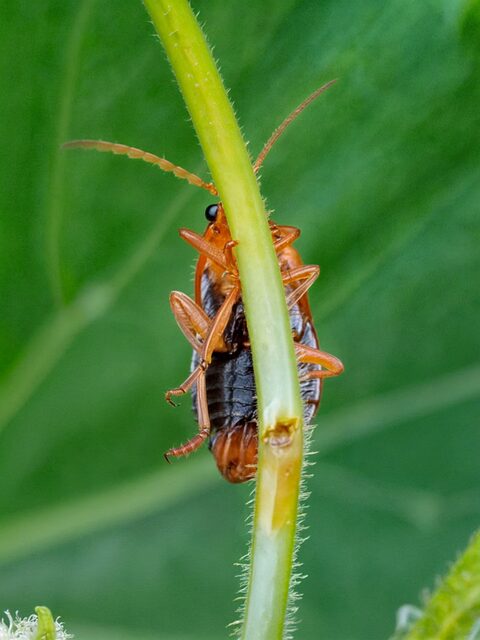Termites pose significant risks in warm climates, but traditional toxic treatments are being replaced by eco-friendly termite solutions. These innovative methods use non-toxic essential oils, biological control agents, and targeted baiting systems to disrupt termite activity safely. By avoiding toxic chemicals, these solutions protect children, pets, and the environment while effectively managing infestations. Techniques like using natural ingredients, heat treatment, and termite baits are gaining popularity for their safety and effectiveness. Implementing eco-friendly termite solutions at home prioritizes the well-being of loved ones and contributes to a healthier ecosystem.
In the quest for a pest-free home, it’s crucial to explore child- and pet-safe termite control methods. This article delves into the world of termites, their impact on homes, and the evolving landscape of termite control. We compare traditional methods with eco-friendly alternatives, highlighting the importance of non-toxic, safe solutions for families and pets. Discover innovative practices and learn how to implement and maintain these effective yet environmentally conscious eco-friendly termite solutions.
Understanding Termites and Their Impact on Homes
Termites are tiny insects that can cause significant damage to homes and buildings, often going unnoticed for years. They feed on cellulose materials, which include wood and paper products, making them a common pest in areas with warm climates. Understanding their behavior and life cycle is essential when implementing effective termite control methods, especially those that are child- and pet-safe. These pests can infiltrate structures through tiny cracks and gaps, establishing colonies that may grow to thousands of individuals over time.
While traditional termite treatments often rely on toxic chemicals, there is a growing trend towards eco-friendly termite solutions. These alternative methods focus on non-toxic, natural ingredients and strategies to disrupt termite activity without harming the environment or household members, including children and pets. By utilizing essential oils, biological control agents, and targeted baiting systems, homeowners can now protect their properties from termites while maintaining a safe and healthy living space.
Traditional vs Eco-Friendly Termite Control Methods
In the battle against termites, traditional methods often involve toxic chemicals that can be harmful to children and pets if not handled properly. These conventional termite control solutions may include powerful insecticides and pesticides that leave a lingering residue, raising concerns about long-term health effects and environmental impact. As a result, there’s a growing trend towards eco-friendly termite solutions that offer safer alternatives for homes with kids and pets.
Eco-friendly termite control methods leverage natural predators, biological agents, and non-toxic baits to manage and eliminate termite infestations. These strategies not only minimize the risk of exposure to children and pets but also contribute to a healthier environment by reducing chemical pollution. Natural predators like nematodes and certain fungi can effectively target termites without causing harm to other organisms or leaving harmful residues. Additionally, eco-friendly baits attract termites with specific pheromones, luring them away from structures and into traps, providing a safe and controlled solution.
Child-Safe and Pet-Friendly Products and Practices
When it comes to protecting your home from termites, there’s a growing trend towards eco-friendly termite solutions that are safe for children and pets. Many traditional termite control methods rely on toxic chemicals that can pose risks to vulnerable members of the household, but modern, child-safe and pet-friendly products offer effective alternatives. These innovative solutions typically use natural ingredients or minimal formulations of synthetic chemicals, ensuring a healthier environment without compromising on pest control.
One popular eco-friendly approach is the use of essential oils, such as lemongrass and neem oil, which have natural insecticidal properties. Termite baits are another preferred method; these attract and kill termites discreetly, minimizing the need for direct chemical applications. Moreover, modern equipment and techniques, like heat treatment and microwave pest control, offer non-toxic options that are safe for both humans and animals.
Implementing and Maintaining Eco-Friendly Termite Solutions at Home
Implementing and maintaining eco-friendly termite solutions at home is a responsible approach to pest control that prioritizes the safety of children and pets while effectively managing termite infestations. These methods leverage natural ingredients, biological agents, and non-toxic chemicals to create a balanced ecosystem within your living space. For instance, essential oils like peppermint and lemon are known termites deterrents due to their strong scents, offering a safe alternative to traditional insecticides that could be harmful if ingested by pets or absorbed through skin.
Regular monitoring is key to successful eco-friendly termite control. Inspecting your home periodically for signs of an infestation allows you to catch issues early when they’re more manageable. Additionally, maintaining a pristine level of cleanliness and eliminating potential food sources, such as wood debris or moisture problems, can significantly reduce the likelihood of termites taking up residence in your home. By combining these natural strategies with diligent care, you can create an environment that discourages termites while ensuring the well-being of your loved ones and pets.
In light of the potential harm caused by traditional termite control methods, adopting eco-friendly alternatives is a responsible step towards protecting our homes and loved ones. By understanding the behavior of termites and exploring child- and pet-safe options, we can effectively manage these pests without compromising on safety or environmental well-being. Eco-friendly termite solutions not only safeguard our families but also contribute to a healthier planet. Let’s embrace these innovative practices to create a safer, greener living environment for all.
